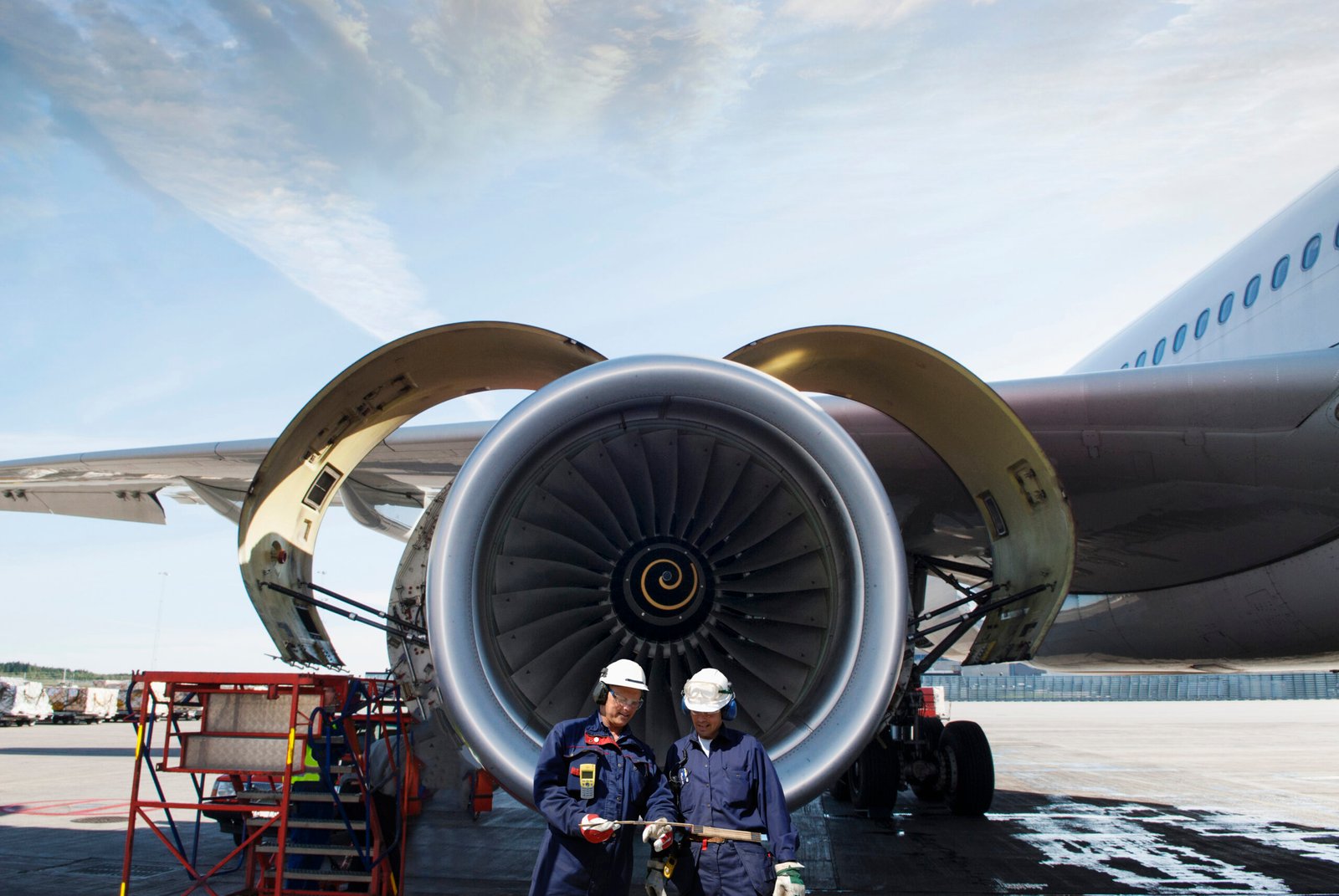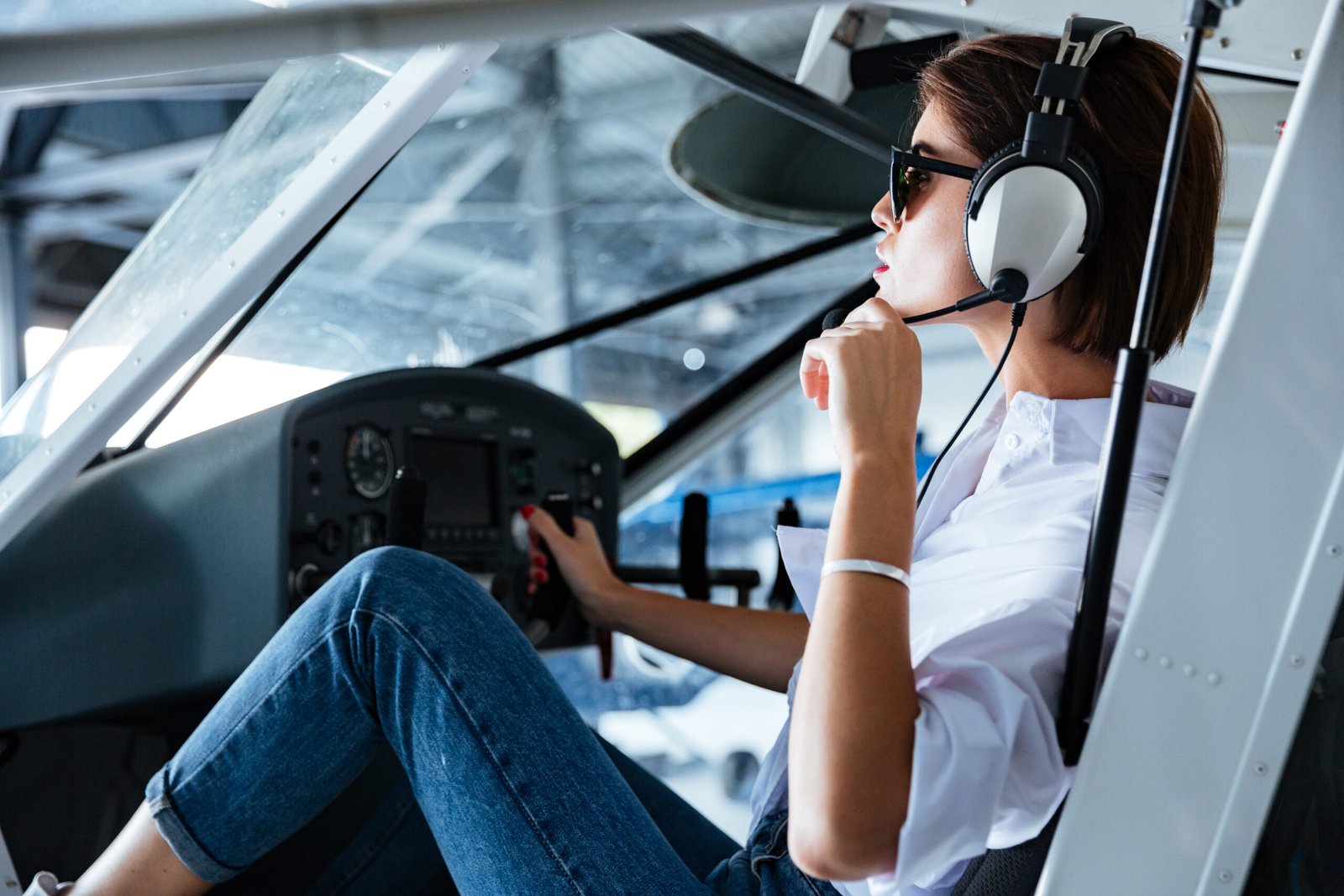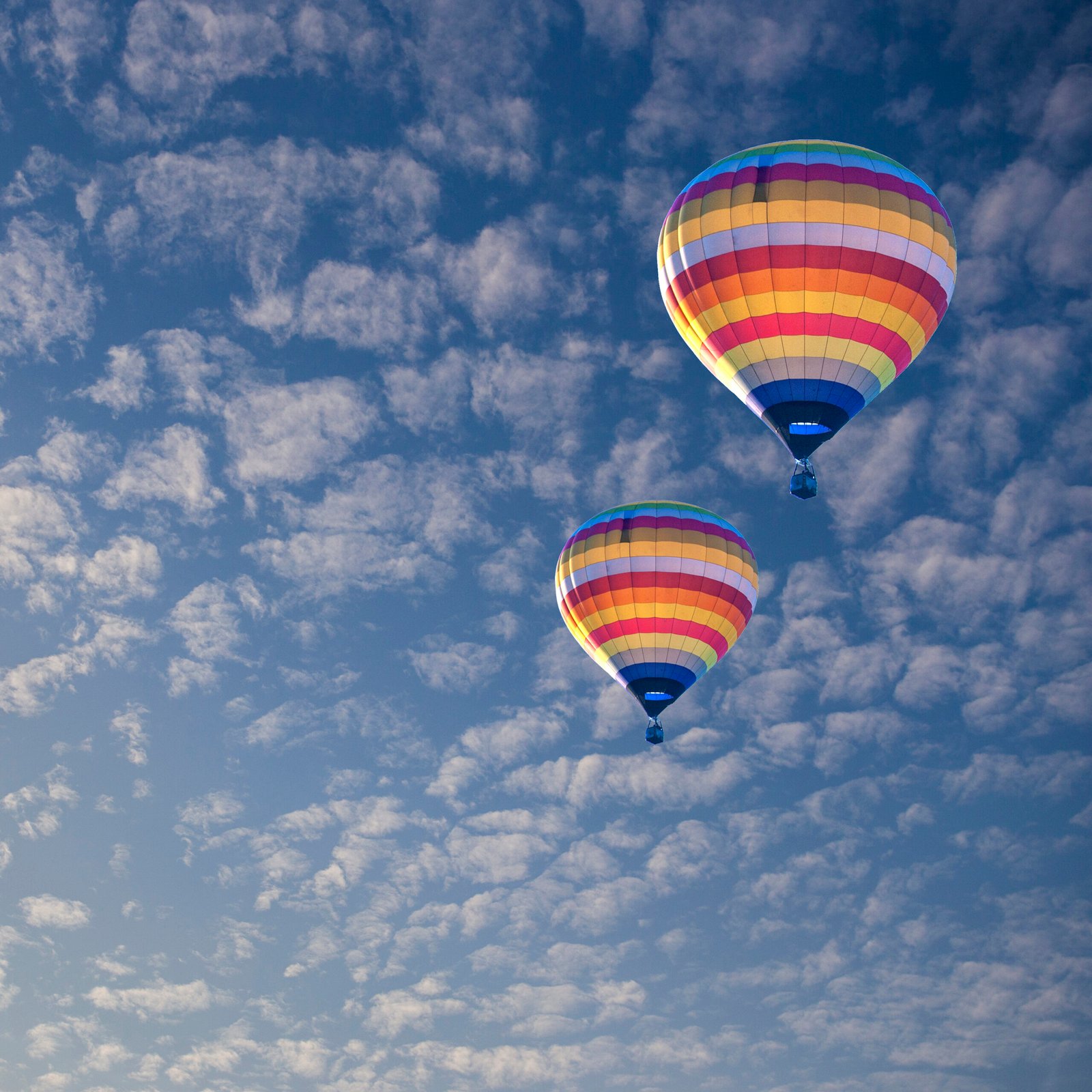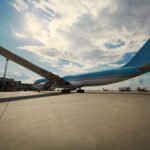poppanew
Behind the Cockpit: A Day in the Life of a Pilot
Ever wondered what it’s like to soar through the skies, navigating vast expanses of blue? For many aspiring aviators, the journey begins not in the clouds but in classrooms and simulators across the country. Aviation schools offer a variety of courses designed to equip future pilots with essential skills and knowledge. From ground school to flight training, these programs come in different flavors tailored to meet diverse needs.
Aviation schools typically provide several types of courses. **Private Pilot License (PPL)** programs allow students to learn the basics of flying and gain their first certification. Next up is the **Instrument Rating**, which trains pilots to fly under instrument flight rules – crucial for navigating through clouds and poor visibility. For those aiming for commercial aviation careers, a **Commercial Pilot License (CPL)** course is vital, providing deeper insights into advanced flying techniques, navigation systems, and aircraft operations. Additionally, aspiring airline pilots often pursue an **Airline Transport Pilot (ATP)** certificate, which requires extensive flight hours and knowledge about complex aircraft systems.
Beyond traditional classroom instruction, modern technology plays a pivotal role in pilot training. Flight simulators have revolutionized how trainees experience aviation without leaving solid ground. These realistic setups mimic various aircraft scenarios, allowing students to practice emergency procedures and navigation techniques safely. FAA-approved flight schools incorporate simulators into their curricula to enhance learning outcomes while ensuring compliance with regulatory standards.


While educational institutions lay the groundwork for budding aviators, connecting with fellow enthusiasts can further enrich one’s aviation journey. Numerous blogs and websites curate valuable information on current trends, tips for aspiring pilots, industry news, and personal experiences that can inspire newcomers.
Some popular aviation blogs include **Airways Magazine**, which covers everything from aircraft reviews to travel stories; **The Aviation Herald**, dedicated to safety incidents; and **Flying Magazine**, offering practical advice on flying techniques. Websites like **PilotJourney.com** serve as rich resources for aspiring pilots seeking guidance on flight paths—figuratively speaking—and career options within aviation.
Social media has also become an incredible platform for sharing information within this community. Platforms like Instagram feature accounts such as @pilotlife and @aviationphotography that showcase stunning aerial shots alongside captivating pilot stories. On Facebook, groups like “Aviation Enthusiasts” provide spaces where individuals share experiences or seek advice about training programs or specific aircraft.
As you navigate your path toward becoming a pilot or simply indulge your love for aviation from afar, tapping into these resources will prove invaluable. The world of aviation extends beyond flight; it encompasses shared experiences among passionate individuals dedicated to mastering the skies.
In conclusion, embarking on a career as a pilot involves more than just logging hours in the cockpit; it requires dedication towards education through various aviation courses offered at specialized schools across America. With robust support networks found through blogs and social media channels alike fostering connections among aviators everywhere—from novices eager to learn all they can about flying—to seasoned professionals sharing their wisdom—the sky’s truly not the limit! So buckle up; your adventure awaits!
From the Ground Up: Exploring the Evolution of Aircraft Design
Aviation has come a long way since the Wright brothers took their inaugural flight in 1903. Today, aircraft design embodies cutting-edge technology, efficiency, and sustainability. But to truly appreciate this evolution, it’s essential to understand the pathways that aspiring aviators and engineers can take to delve into this fascinating world.
Aviation schools offer a diverse range of courses tailored for different interests within the field. Broadly categorized, these institutions provide programs in pilot training, aircraft maintenance, aviation management, and aerospace engineering.
1. **Pilot Training Programs**: These are designed for individuals who dream of soaring through the skies as commercial or private pilots. Courses typically cover topics such as aerodynamics, navigation, meteorology, and regulations set forth by governing bodies like the FAA.

2. **Aircraft Maintenance Programs**: For those interested in the technical side of aviation, these courses focus on ensuring that aircraft remain safe and operational. Students learn about engine mechanics, electrical systems, and airframe structures.
3. **Aviation Management Degrees**: This branch appeals to future leaders in aviation industries—those who wish to oversee operations at airports or airlines. Courses may include business administration principles tailored specifically for aviation contexts.
4. **Aerospace Engineering**: For a more technical dive into aircraft design itself, students can pursue degrees in aerospace engineering where they study everything from materials science to propulsion systems.
As you embark on your journey through aviation education or simply seek out more information about this ever-evolving field, many blogs and websites serve as valuable resources. Here’s a list worth checking out:
**Airways Magazine**: A well-respected publication covering all things aviation-related—from airline news to aircraft features.
**Flying Magazine**: A treasure trove for pilots featuring tips on flight techniques alongside product reviews.
**The Aviation Herald**: An informative platform focusing on incidents and accidents within aviation.
**Plane & Pilot Magazine**: Offers a mix of industry news along with engaging articles tailored for flying enthusiasts.
Additionally, social media platforms have become vibrant spaces for community engagement among aviators:
**Instagram** is filled with stunning aerial photography shared by pilots around the globe.
On **Twitter**, hashtags like #AvGeek attract a plethora of tweets detailing daily happenings in aviation.
YouTube channels dedicated to flight simulation and pilot experiences provide immersive content that captures both novice interest and seasoned expertise.
When it comes down to practical training facilities recognized by the FAA (Federal Aviation Administration), there’s no shortage of reputable flight schools across the country. These institutions often feature state-of-the-art simulators that replicate real-world flying conditions while minimizing risk exposure during training sessions.
Flight schools such as Embry-Riddle Aeronautical University or ATP Flight School are renowned for their comprehensive curriculum combined with hands-on experience using advanced simulators equipped with realistic cockpit layouts complete with modern avionics systems.
In conclusion, whether you’re an aspiring pilot dreaming high above clouds or an engineer fascinated by how planes are constructed from scratch—understanding various educational pathways in aviation will pave your personal runway toward success. The evolution of aircraft design continues; yet its roots lie firmly planted in educational foundations built from ground up!
From Runways to Skies: The Evolution of Air Travel
The world of aviation has evolved at an incredible pace, transforming from the dream of flight into a thriving global industry. With this growth comes the need for skilled professionals who understand every nuance of air travel. Whether you’re aspiring to become a pilot, aircraft technician, or air traffic controller, aviation schools offer a variety of courses tailored to meet these demands.
Aviation schools can be categorized based on the types of courses they provide. Firstly, there are **pilot training programs**, which encompass everything from private pilot licenses (PPL) to commercial pilot licenses (CPL) and even airline transport pilot licenses (ATPL). These courses typically combine ground school instruction with practical flight training using both real aircraft and simulators.
Next up are **aircraft maintenance programs**, where students learn about the technical side of flying. Here, aspiring mechanics dive into subjects such as airframe systems, powerplants, and avionics. These programs prepare graduates for critical roles in ensuring aircraft safety and reliability.
Another vital area is **air traffic control training**. This course emphasizes navigation procedures and communication protocols essential for managing the busy skies above us. The curriculum focuses on developing quick decision-making skills and understanding complex air traffic scenarios.
Lastly, there are specialized courses in fields like **aeronautical engineering** and **aviation management**, which cater to those interested in designing aircraft or managing aviation operations respectively. This diversity in educational paths equips students with the necessary skills to succeed in various facets of the aviation industry.
As one embarks on their journey through aviation education, staying informed about trends and developments is crucial. Luckily, numerous blogs and websites offer rich content dedicated to air travel enthusiasts and professionals alike. Some noteworthy mentions include:
1. **AirlineReporter.com** – A blog that explores current happenings in the airline industry while providing insights into new technologies.
2. **FlyingMagazine.com** – A staple for pilots offering articles on flying techniques, gear reviews, and personal stories from aviators.
3. **Plane & Pilot Magazine** – Covering everything from flying tips to product reviews; it’s an informative resource for pilots at any level.
4. **The Points Guy (TPG)** – While primarily focused on travel points maximization, TPG often covers aviation news relevant to frequent flyers.
5. **FlightAware Blog** – This platform offers a deep dive into real-time flight tracking data along with analysis on trends impacting airlines.
In addition to blogs, social media platforms serve as excellent resources for networking within the aviation community. Twitter accounts such as @AviationWeek keep followers updated on industry news while Instagram profiles like @pilotlife showcase breathtaking aerial views that inspire many aspiring pilots.

For those looking specifically at FAA-approved flight schools or simulators, there’s no shortage of options across the United States that adhere strictly to federal guidelines ensuring quality training experiences. Notable names include:
**Embry-Riddle Aeronautical University** – Renowned for its comprehensive curriculum spanning all aspects of aviation.
**ATP Flight School** – Focused primarily on accelerated pilot training designed for those eager to enter commercial flying swiftly.
**CAE Global Academy** – Offers high-fidelity simulator training alongside actual flight time experiences.
Simulators have revolutionized pilot training by providing realistic scenarios that enhance learning without risk factors associated with live flights. From basic maneuvers to emergency response drills, these tools empower future aviators with confidence before they take off into the skies.
In conclusion, as we reflect upon how far air travel has come since its inception—from wooden biplanes skimming runways to ultra-modern jets soaring through clouds—it’s clear that education plays a pivotal role in shaping its future trajectory. With a plethora of resources available today—from diverse course offerings at aviation schools to insightful online communities—there’s never been a better time to embark on an aerospace adventure!
Clouds and Composites: The Role of Sustainable Aviation Practices in Our Future
As we soar into an era where sustainability is no longer an option but a necessity, the aviation industry is undergoing a transformative shift. From innovative training programs to modern materials, sustainable practices have become integral in shaping the future of flight. One of the fundamental pillars supporting this evolution is education. Aviation schools are stepping up, offering various courses that equip aspiring pilots and engineers with the knowledge needed to embrace eco-friendly aviation.
*Aviation Schools by Types of Courses**
Aviation education encompasses a wide array of disciplines, each targeting specific aspects of flight operations and aircraft maintenance. Here are some key types of courses offered:
1. **Pilot Training Programs**: These courses focus on teaching students how to operate aircraft safely and efficiently. They cover topics such as aerodynamics, navigation, meteorology, and emergency procedures.
2. **Aircraft Maintenance Technician (AMT) Programs**: Students learn about the technical aspects of maintaining aircraft systems, ensuring they meet safety standards. This includes hands-on training with composite materials that contribute to lighter and more fuel-efficient planes.
3. **Aviation Management Degrees**: For those interested in the business side of aviation, these programs delve into operational strategies, regulatory compliance, and sustainable practices within airline management.
4. **Air Traffic Control (ATC) Training**: Aspiring air traffic controllers receive specialized training that prepares them for managing air traffic safely while considering environmental impacts.
5. **Unmanned Aircraft Systems (UAS)**: With the rise of drone technology, schools now offer UAS programs focusing on operation regulations and applications in various fields including delivery services and environmental monitoring.
The diversity in educational pathways not only fosters skilled professionals but also promotes awareness around sustainable practices in aviation.
*Lists of Aviation Blogs, Websites, Social Media Sites**
In addition to formal education, several online resources serve as valuable tools for both current professionals and enthusiasts looking to stay informed about advancements in sustainable aviation practices:
**Blogs**:
– *Airways Magazine*: Covers news from across the industry along with insights on sustainability.
– *Flying Magazine*: Offers articles on pilot experiences intertwined with eco-friendly innovations.
– *The Air Current*: Focuses on deep dives into trends affecting commercial aviation’s future.
**Websites**:
– *FAA.gov*: The Federal Aviation Administration’s official site provides crucial regulations regarding sustainable practices.
– *Aviation Week*: A comprehensive source for industry news that often highlights green initiatives.
**Social Media Platforms**:
– Twitter accounts like @FlyGreen or @SustainableAero provide quick updates on sustainability efforts.
– LinkedIn groups centered around green aviation initiatives foster professional discussions among industry experts.
These platforms facilitate ongoing learning and community engagement essential for advancing sustainable practices within aviation.
*FAA Flight Schools/Airplane Schools/Simulators**
For those eager to embark on their flying journey or enhance their skills sustainably, FAA-approved flight schools present excellent opportunities. Many institutions now incorporate simulators equipped with advanced technologies focused on eco-conscious flying techniques. These simulators enable students to experience real-world scenarios without contributing to carbon emissions during training flights.

By leveraging innovative educational frameworks alongside cutting-edge technology—from composite materials used in aircraft design to virtual simulations—aviation is charting a course toward a greener future. As we navigate through clouds both literal and metaphorical, embracing sustainable practices will ensure that generations can enjoy the freedom of flight while respecting our planet’s limits.
By investing in education today about our skies tomorrow—through diverse courses at aviation schools or engaging with various online resources—we’re not just passengers; we’re active participants steering toward an environmentally responsible aerial landscape!
The Future of Flight: Innovations Shaping the Aviation Industry
As we soar into a new era of aviation, the sky is no longer the limit—it’s just the beginning. With technological advancements and innovative ideas taking flight, the aviation industry is undergoing profound transformations. From educational pathways to cutting-edge training tools, let’s explore how these developments are shaping the future of flight.
## Aviation Schools by Types of Courses
Education plays a pivotal role in preparing aspiring aviators for their careers. Various types of courses cater to different interests within this expansive field. For those keen on becoming pilots, traditional flight schools offer comprehensive programs that include ground school theory, practical flight training, and specialized certifications like Instrument Rating or Commercial Pilot License.
Meanwhile, aviation management courses focus on the business side of flying—covering topics like airport operations, regulatory compliance, and airline management. These programs equip students with skills essential for overseeing complex aviation enterprises.

For those intrigued by technology’s role in aviation, many institutions now provide courses in aeronautical engineering or drone technology. As unmanned aerial vehicles (UAVs) become more prevalent in both commercial and recreational airspace, knowledge in this area is increasingly valuable.
Finally, maintenance technician programs train individuals to ensure aircraft safety and performance through hands-on experience with engines and systems. The demand for skilled technicians continues to rise as fleets expand globally.
## Lists of Aviation Blogs, Websites, Social Media Sites
For enthusiasts eager to stay updated on industry trends or share insights with fellow aviators, numerous blogs and websites serve as excellent resources:
1. **AirlineReporter** – Focused on airline reviews and news.
2. **AvGeekery** – A captivating blog for aviation aficionados packed with stories from around the world.
3. **FlightGlobal** – Offers comprehensive news coverage on all things aviation-related.
4. **Simple Flying** – An accessible site that covers breaking news about airlines and aircraft.
5. **Pilot’s Digest** – Provides tips for pilots along with interesting articles about flying experiences.

Social media has also become an invaluable tool for connecting with fellow aviators. Platforms like Instagram showcase stunning aerial photography under hashtags like #aviationlovers or #aircraftspotting while Twitter serves as a rapid-fire news source where industry experts share updates using handles such as @AviationWeek or @FltPlan.
## FAA Flight Schools/Airplane-Schools/Simulators
The Federal Aviation Administration (FAA) recognizes various flight schools across the United States that adhere to rigorous safety standards and training protocols. Aspiring pilots can enroll in FAA-certified schools which provide structured curriculums designed to take them from novice flyers to seasoned aviators.
In addition to traditional classroom settings, simulators have revolutionized pilot training by offering realistic environments without leaving the ground. Modern flight simulators replicate almost every aspect of flying—from environmental conditions to cockpit instrumentation—allowing students to gain crucial experience before stepping into real aircraft.
Moreover, many innovative platforms are emerging that utilize virtual reality (VR) technology for immersive training experiences—making it possible for students to practice maneuvers safely and effectively from anywhere they choose.
## Conclusion
As we look ahead into the horizon of aviation innovation—from diverse educational opportunities to groundbreaking technologies—the future appears bright indeed! New generations of pilots will be equipped not only with superior skills but also an understanding of how emerging trends shape air travel’s landscape today—and beyond! Embracing these changes ensures a thrilling journey awaits us all in the skies above!




